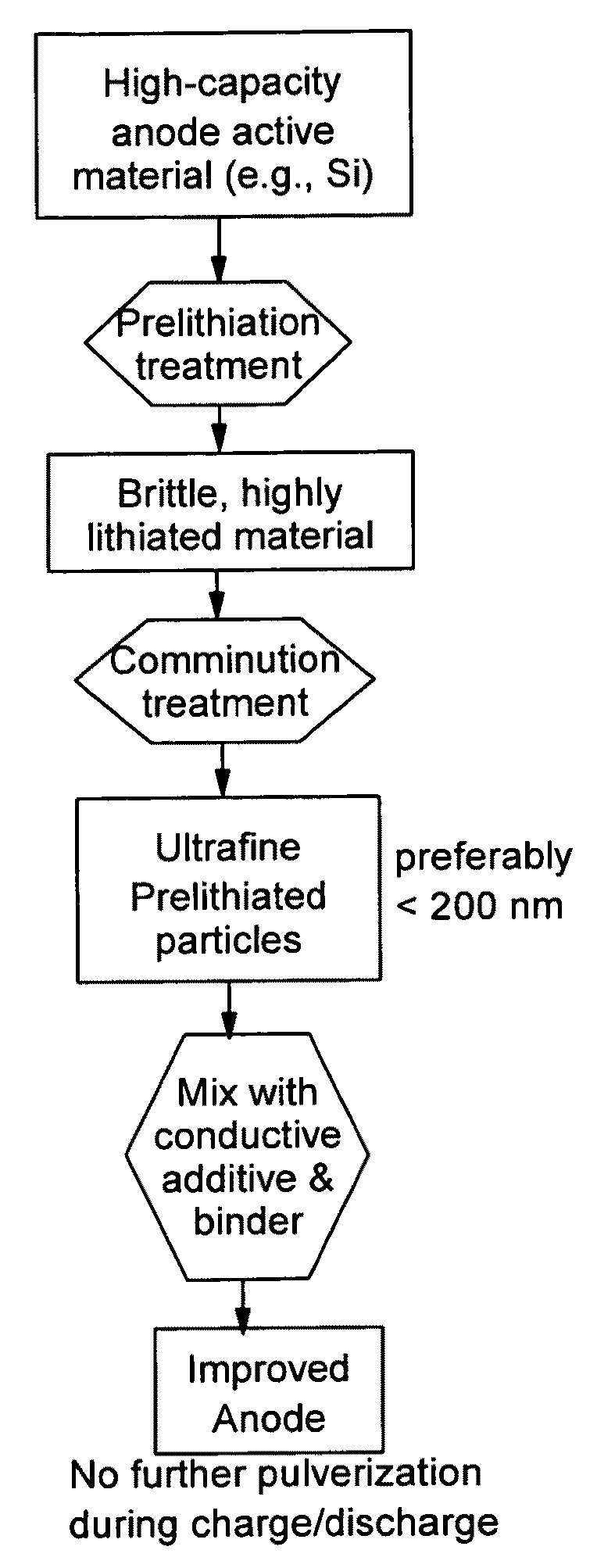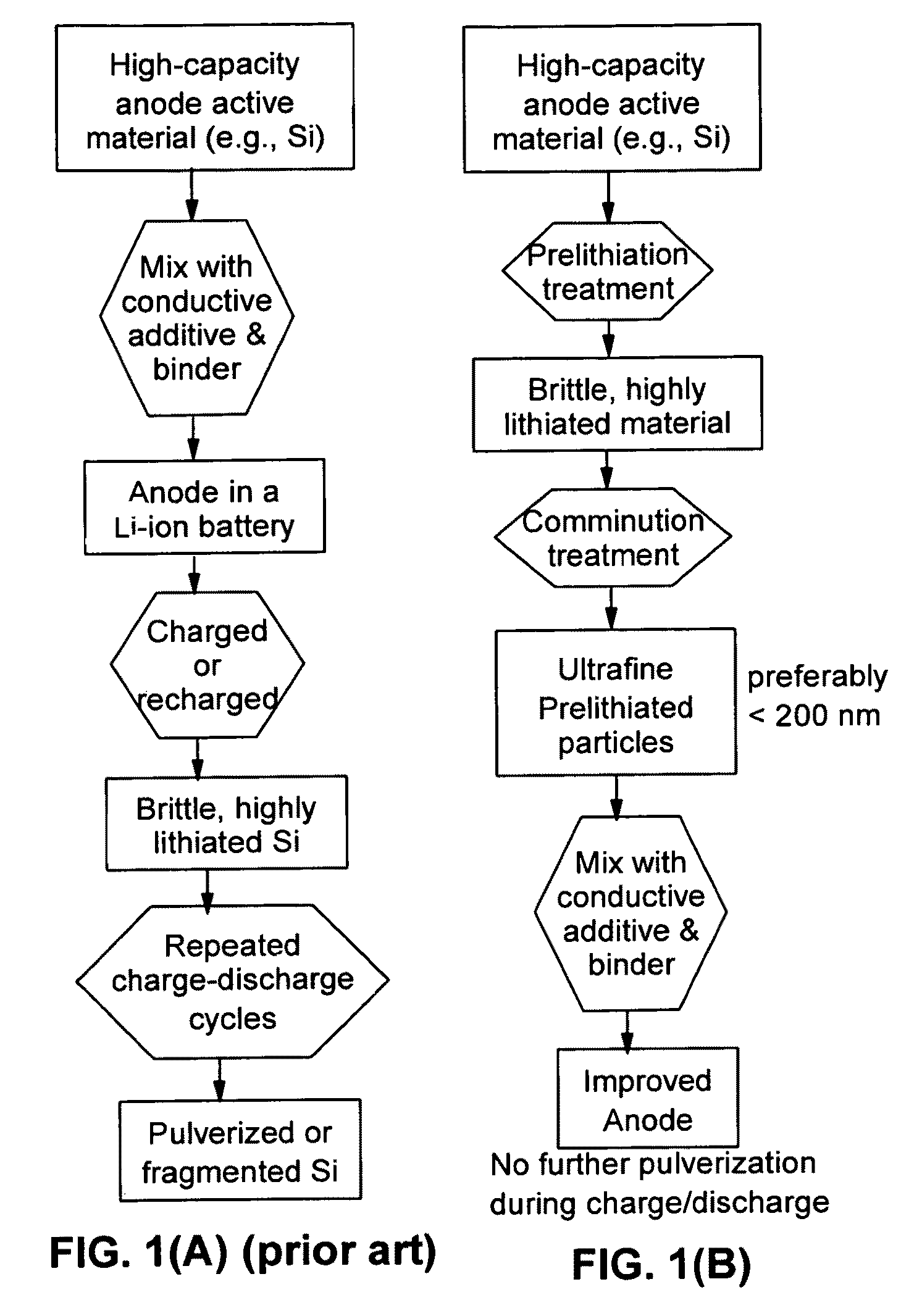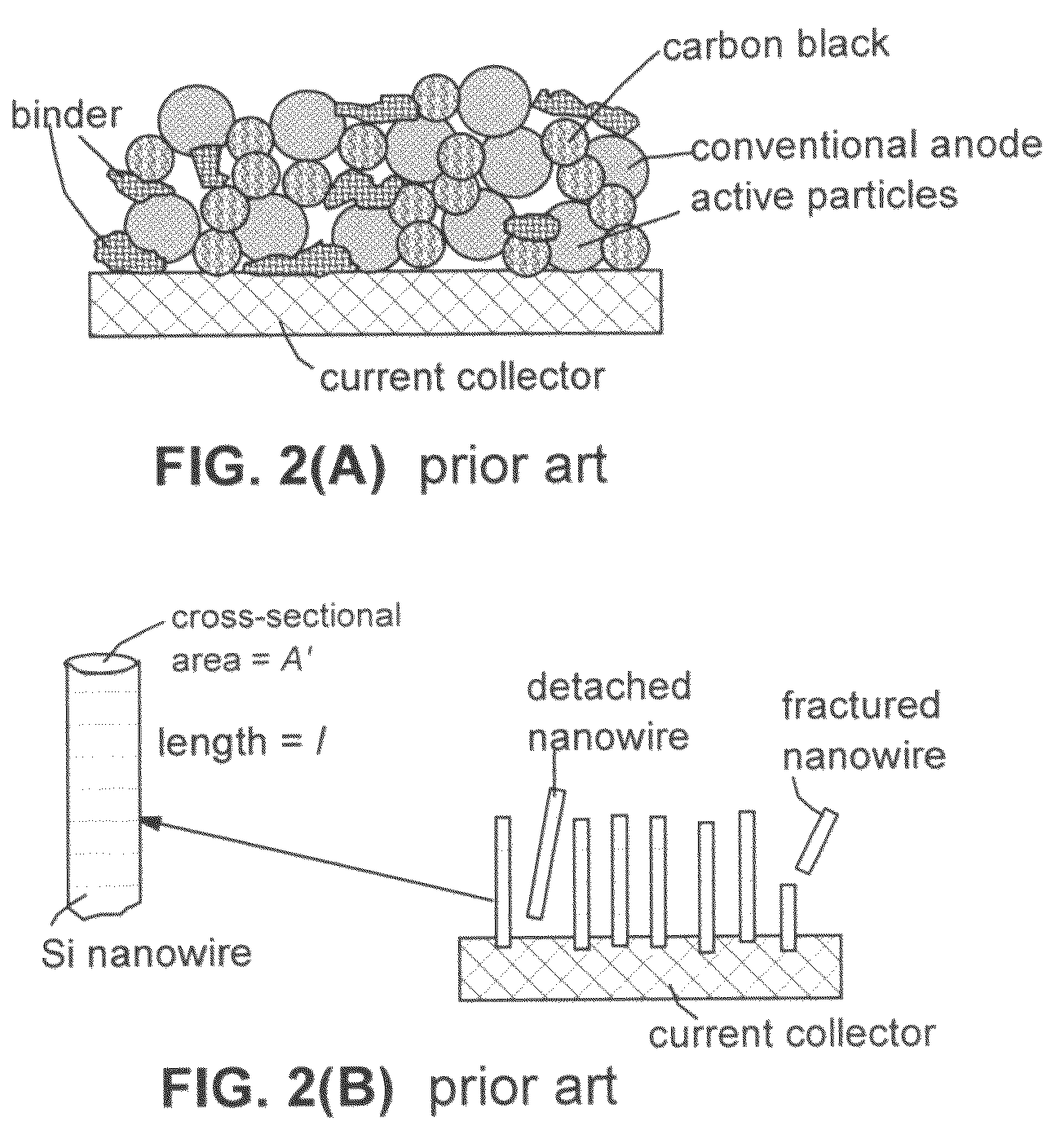Secondary lithium ion battery containing a prelithiated anode
a lithium ion battery and prelithiated anode technology, applied in the field of secondary batteries, can solve the problems of fragments no longer active in providing electrons to the external circuit, fragments that are easily pulverized or fragmented, and high dilated particles or thin films are extremely brittle and prone to pulverization or fragmentation, so as to prolong the charge-discharge cycle and improve the specific capacity.
- Summary
- Abstract
- Description
- Claims
- Application Information
AI Technical Summary
Benefits of technology
Problems solved by technology
Method used
Image
Examples
example 1
[0126]Summarized in FIG. 3 are the results of a study that illustrates the impressive advantages of the presently invented anode technology. The sample was prepared by using the prelithiated Si particles coated with amorphous carbon (13% after carbonization of phenolic resin) and bonded by PVDF as the working electrode and lightly lithium-plated Cu foil as the counter electrode and reference electrode. A specific discharge capacity as high as 2,500 mAh per gram of (Si+C) was maintained after 20 cycles. By contrast, non-prelithiated Si particles, with or without a carbon coating, exhibit a high initial capacity, but the capacity rapidly fades away as the number of repeated charge / discharge cycles increases.
example 2
[0127]FIG. 4 shows the results of ball-milling prelithiated and non-prelithiated Si particles. Clearly, prelithiated particles can be more easily reduced to sub-micron scales. This is a highly surprising, yet desirable result considering the fact that, in general, nano particles have been difficult and expensive to produce. The present invention unexpectedly discovers an efficient way to cost-effectively produce nano particles.
example 3
[0128]We have also investigated the cycling behaviors of several samples, including Si—NGP—C nanocomposite, Si—C nanocomposite (no NGP), and graphite-filled C—Si nanocomposite solid particle-based anodes (all containing Si nano particles). One of the samples prepared contains approximately 15% NGPs, 60% Si nano particles, and 25% carbon matrix and is herein designated as Sample-A. The corresponding sample containing Si nano particles that are prelithiated is designated Sample-A-P. For comparison purpose, a Comparative Sample-B was prepared by dispersing Si nano particles (approximately 70%) in a pitch matrix, as in Sample-A, but without the presence of any NGP. A corresponding sample containing Si nano particles that are prelithiated is denoted as Sample-B-P. A Comparative Sample-C was prepared by replacing NGPs with fine natural graphite particles (average diameter=3.5 μm) obtained by air-jet milling of natural flake graphite. A corresponding sample containing Si nano particles tha...
PUM
| Property | Measurement | Unit |
|---|---|---|
| size | aaaaa | aaaaa |
| particle size | aaaaa | aaaaa |
| particle size | aaaaa | aaaaa |
Abstract
Description
Claims
Application Information
 Login to View More
Login to View More - R&D
- Intellectual Property
- Life Sciences
- Materials
- Tech Scout
- Unparalleled Data Quality
- Higher Quality Content
- 60% Fewer Hallucinations
Browse by: Latest US Patents, China's latest patents, Technical Efficacy Thesaurus, Application Domain, Technology Topic, Popular Technical Reports.
© 2025 PatSnap. All rights reserved.Legal|Privacy policy|Modern Slavery Act Transparency Statement|Sitemap|About US| Contact US: help@patsnap.com



